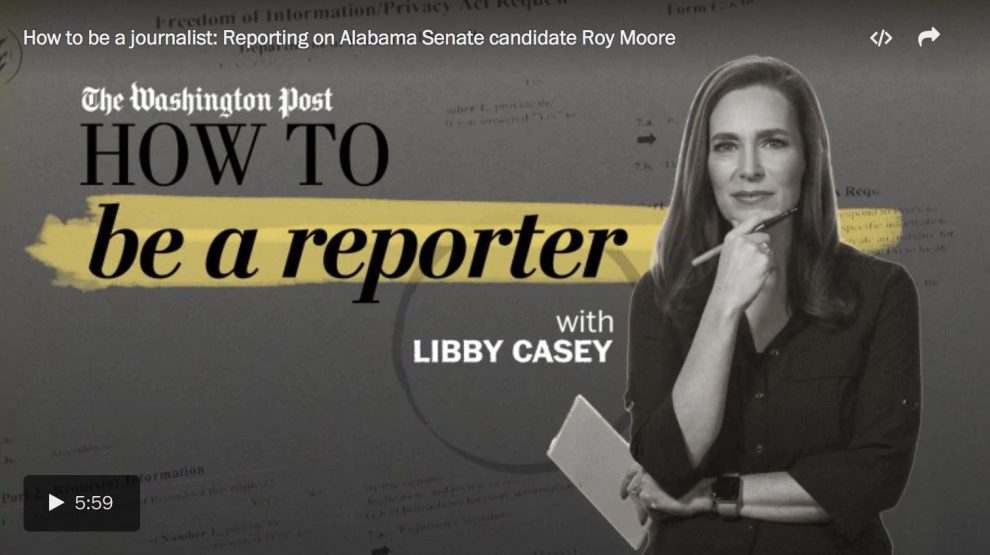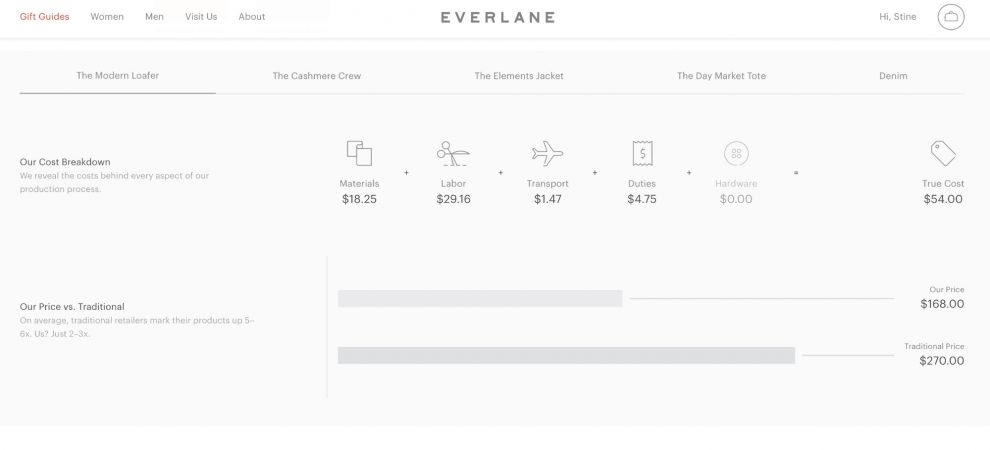We know from research one of the primary reasons people pay for news now is for coverage of a specific topic they care about. In 2018, the reason people pay for news will be less transactional and less about the tangible exchange of goods, but instead based on the ~emotional~ relationship a news organization has with its audience. And that emotional connection is built on trust, transparency, and community.
 People are increasingly spending money with companies and organizations that are radically transparent, that they connect with, want to belong to, or align with the world they want to live in. And younger people who pay for news are more motivated than older news payers by a desire to support to a news organization’s mission and purpose.
People are increasingly spending money with companies and organizations that are radically transparent, that they connect with, want to belong to, or align with the world they want to live in. And younger people who pay for news are more motivated than older news payers by a desire to support to a news organization’s mission and purpose.
If this year was about transparency of the journalistic process and how we do our job, next year it will be about transparency of values and why we do our job.


First above is Malachy Browne’s tweet that shared the steps in how The New York Times covered the Las Vegas shooting using so-called video forensics. Then there’s The Washington Post’s new series on how reporting works and explaining the journalism process.
Take companies like Everlane and Spotify.1 Both have paired making great products with building a values-based brand — and in the process created a new kind of connection with their audience news organizations have yet to achieve. Everlane focuses on manufacturing transparency and forgoes traditional retail tactics like sales. Spotify used their policy on parental leave and flex holidays as an opportunity to showcase their values.

Everlane’s About page explains their mission of “radical transparency” and shows it through cost breakdowns and price comparisons of various products.
Other brands like Away and Glossier have found success in leading with the emotional connection and making their community integral to what they do. Away’s president Jen Rubio said luggage brands talked too much about product details and not enough about what inspired people to use them. One of Glossier’s most popular products, the Milky Jelly Cleanser, was crowdsourced from their site. Last year, 79 percent of its sales were from “organic and peer-to-peer and earned sources,” a.k.a. their community.



Away’s About page leads with its mission and the inspiration behind the product. Glossier’s call out for what became the Milky Jelly Cleanser, and the product page for the cleanser lists every ingredient and highlights some with an accompanying explanation for why it’s included.
Social media, from which two-thirds of Americans get their news, has diminished news organizations’ brand, obscuring the values by which they do their work and the resulting connection. People are more likely to remember which platform they they found content on than the news brand that produced it. News organizations will need to continue the radical transparency of how we do the work, but also couple that with the why.
Taken together, articulating and acting on clear values alongside an aggressive commitment to transparency and community can be a roadmap for news organizations wanting to rebuild and strengthen trust and the emotional relationship with its audience.
Millie Tran is global growth editor at The New York Times. Stine Bauer Dahlberg is managing director, brand at The New York Times.
Marcela Donini and Thiago Herdy Collaboration is the way forward for Brazilian journalism
Mary Meehan Real lives are at stake in rural areas
Kawandeep Virdee Zines had it right all along
Sam Sanders Shine the light on ourselves
Julia Beizer A longer view on the pivot
Tanzina Vega It’s time for media companies to #PassTheMic
Rasmus Kleis Nielsen The Snapchat scenario and the risk of more closed platforms
Mandy Velez texting is lit rn, fam
Michael Kuntz The only pivot that might work
Cory Haik Suffering from realness, pivoting to impact
Sam Ford The year of investing in processes
Pete Brown Push alerts, personalized
Rodney Gibbs Tech workers turn to journalism
Craig Newmark Working together toward sustainable solutions
Kim Fox Audience teams diversify their approach
Ray Soto VR reaches the next level
Alexios Mantzarlis Moving fake news research out of the lab
Matt DeRienzo A recession, then a collapse
Umbreen Bhatti The trust problem isn’t new
Jacqui Cheng Retailers move into content
Dannagal G. Young Stop covering politics as a game
Charo Henríquez Training is an investment, not an expense
Mariano Blejman News games rule
Juleyka Lantigua Women of color will reclaim and monetize our time
Mary Walter-Brown Show a little vulnerability
Rubina Madan Fillion Unlocking the potential of AI
Lucas Graves From algorithms to institutions
Raney Aronson-Rath Transparency is the antidote to fake news
Valérie Bélair-Gagnon Seeking trust in fragmented spaces
Jarrod Dicker Honesty in advertising
Dan Shanoff You down with OTT? (Yeah, DTC)
Marie Gilot No assholes allowed
Hannah Cassius The year of the echo-chamber escapists
Mi-Ai Parrish Blockchain and trust
Richard Tofel The platforms’ power demands more reporters’ attention
Alastair Coote The year of self-improvement
Justin Kosslyn The year journalists become digital security experts
Damon Krukowski Reviving the alt-weekly soul
Manoush Zomorodi Self-help as a publishing strategy
Claire Wardle Disinformation gets worse
Caitlin Thompson Podcasting models mature and diversify
Steve Grove The midterms are an opportunity
Jennifer Choi Standing up for us and for each other
David Skok Finding an information-life balance
Lam Thuy Vo Breaking free from the tyranny of the loudest
Andrew Ramsammy The year ownership mattered
Joanne McNeil Gatekeeping the gatekeepers
Jessica Parker Gilbert Design connects storytelling and strategy
Alan Soon The rise of start of psychographic, micro-targeted media
Caitria O'Neill The new court of public opinion
Corey Johnson The pro-fact resistance
Kinsey Wilson Facebook and Google: Help out or pay up
Francesco Marconi The year of machine-to-machine journalism
Basile Simon We need better career paths for news nerds
Imaeyen Ibanga Longform video leads the way
Amy Webb Listen to weak signals
Monika Bauerlein The firehose of falsehood
Alice Antheaume Are you fluent in AI?
Rodney Benson Better, less read, and less trusted
S. Mitra Kalita The arc of news and audience
Sara M. Watson Feeds will open up to new user-determined filters
Edward Roussel Eyes, ears, and brains
Corey Ford The empire strikes back
Kyle Ellis Let’s build our way out of this
Tracie Powell The muting of underserved voices
Tamar Charney We get serious about algorithms
Jamie Mottram From pageviews to t-shirts
Will Sommer The year local media gets conservative
Pia Frey Address users as individuals
Susie Banikarim R.I.P. Pivot to Video (2017–2017)
Vanessa K. DeLuca Women’s voices take center stage
Sarah Marshall Loyalty as the key performance indicator
Cristina Wilson The year of the Instagram Story
Brian Lam Sketchy ethics around product reviews
Zizi Papacharissi Women come back
Matt Carlson Attacks on the press will get worse
Cindy Royal Your journalism curriculum is obsolete
Eric Nuzum Beyond the narrative arc
Joyce Barnathan It will be harder to bury the news
Sally Lehrman Trust comes first
Raju Narisetti Mirror, mirror on the wall
Errin Haines At the ballot, it’s time to count black women
Juliette De Maeyer A responsible press criticism
Evie Nagy Pivot to mobile video frustration
Federica Cherubini The rise of bridge roles in news organizations
Tim Carmody Watch out for Spotify
Elizabeth Jensen Show your work
Michelle Ferrier The year of the great reckoning
Joanne Lipman Journalists inventing revenue streams
Jassim Ahmad Thriving on change
Doris Truong Computer vision vs. the Internet vigilantes
Miguel Castro The arrival of the impact producer
Molly de Aguiar Good journalism won’t be enough
Aron Pilhofer We can’t leave the business to the business side any more
Jim Moroney Newspapers have to be good enough for readers to pay for
Renée Kaplan The year of quiet adjustments (shhh)
Jennifer Brandel and Mónica Guzmán The editorial meeting of the future
Nikki Usher The year of The Washington Post
Ernst-Jan Pfauth Publishing less to give readers more
Bill Keller A growing turn to philanthropy
Feli Sánchez The year for guerrilla user research
Gordon Crovitz Serving readers over advertisers
Adam Thomas Sharing is caring: The year of the mentor
Jennifer Coogan The future is female
Jim Brady With the people, not just of the people
Rachel Davis Mersey AI, with real smarts
Michelle Garcia Navigating journalistic transparency
Dheerja Kaur Fun with subscription products
Carlos Martínez de la Serna The new journalism commons
Hossein Derakhshan Television has won
Mira Lowe The year of the local watchdog
Rick Berke Value is the watchword
Niketa Patel Live journalism comes of age
Carrie Brown-Smith Transparency finally takes off
Amy King Let’s amplify visual voice
Helen Havlak Keywords, not publishers, power the world’s biggest feeds
Julia B. Chan Looking for loyalty in all the right places
Yvonne Leow The rise of video messaging
Luke O'Neil The end is already here
C.W. Anderson The social media apocalypse
Rachel Schallom Better design helps differentiate opinion and news
Mario García Storytelling finally adapts to mobile
Millie Tran and Stine Bauer Dahlberg (Hint: It’s about your brand)
Betsy O'Donovan and Melody Kramer Skepticism and narcissism
Debra Adams Simmons And a woman shall lead them
Nicholas Diakopoulos Fortifying social media from automated inauthenticity
Ståle Grut Reclaiming audience interaction from social networks
Mike Caulfield Refactoring media literacy for the networked age
AX Mina Memes and visuals come to the fore
Emma Carew Grovum Newsroom culture becomes a priority
Alfred Hermida Going beyond mobile-first
Jared Newman Venture funding and digital news don’t mix
Pablo Boczkowski The rise of skeptical reading
Frédéric Filloux External forces
Borja Echevarría TV goes digital, digital goes TV
Vivian Schiller Pivot to tomorrow
Daniel Trielli The rich get richer, the poor scramble
Monique Judge Letting black women tell their own stories
Jesse Holcomb Information disorder, coming to a congressional district near you
José Zamora Revenue-first journalism
Mariana Moura Santos Think local, act global
Nushin Rashidian Publishers seek ad dollar alternatives
P. Kim Bui The reckoning is only beginning
Eric Ulken The year local publishers get smart(er) about change
Sydette Harry Listen to your corner and watch for the hook
Ruth Palmer Risks will grow for news subjects — especially minorities
Kristen Muller The year of the voter
Christopher Meighan Passive partnership is in the rearview
Andrew Losowsky The year of resilience
Amie Ferris-Rotman More female reporters abroad (please)
Kathleen McElroy Building a news video experience native to mobile
Matt Boggie The intellectual equivalent of the Dead Sea
Emily Goligoski Looking beyond news for inspiration
Heather Bryant Building the ecosystems for collaboration
Trushar Barot The Jio-fication of India
Matt Thompson Here come the attention managers
Lanre Akinola Making noise is not a strategy
Tanya Cordrey Finally, the seeds of radical reinvention
Nicholas Quah Stop talking trash about young people
Felix Salmon Covering bitcoin while owning bitcoin
Andrew Haeg The year journalists become relationship builders